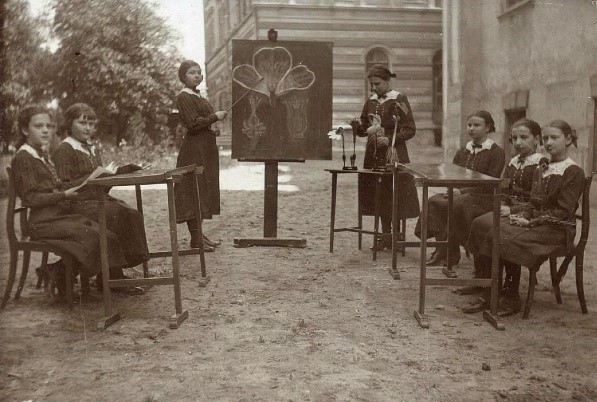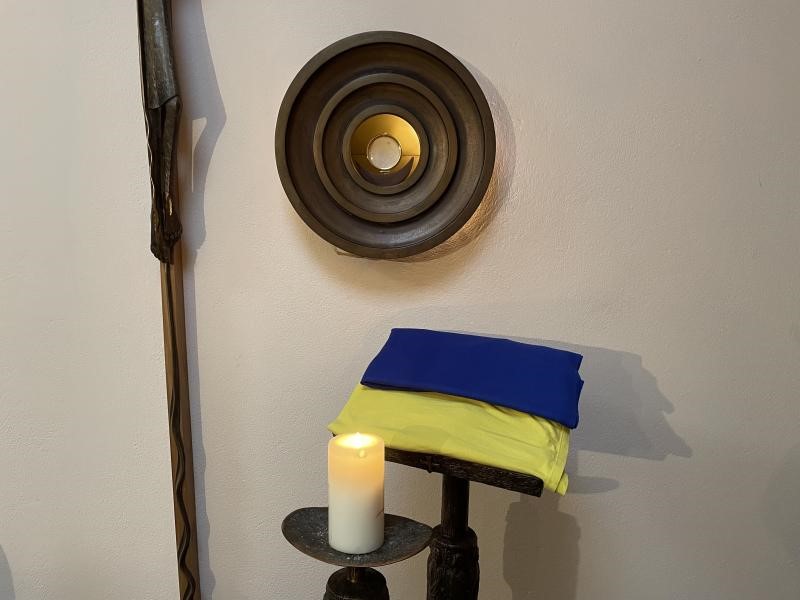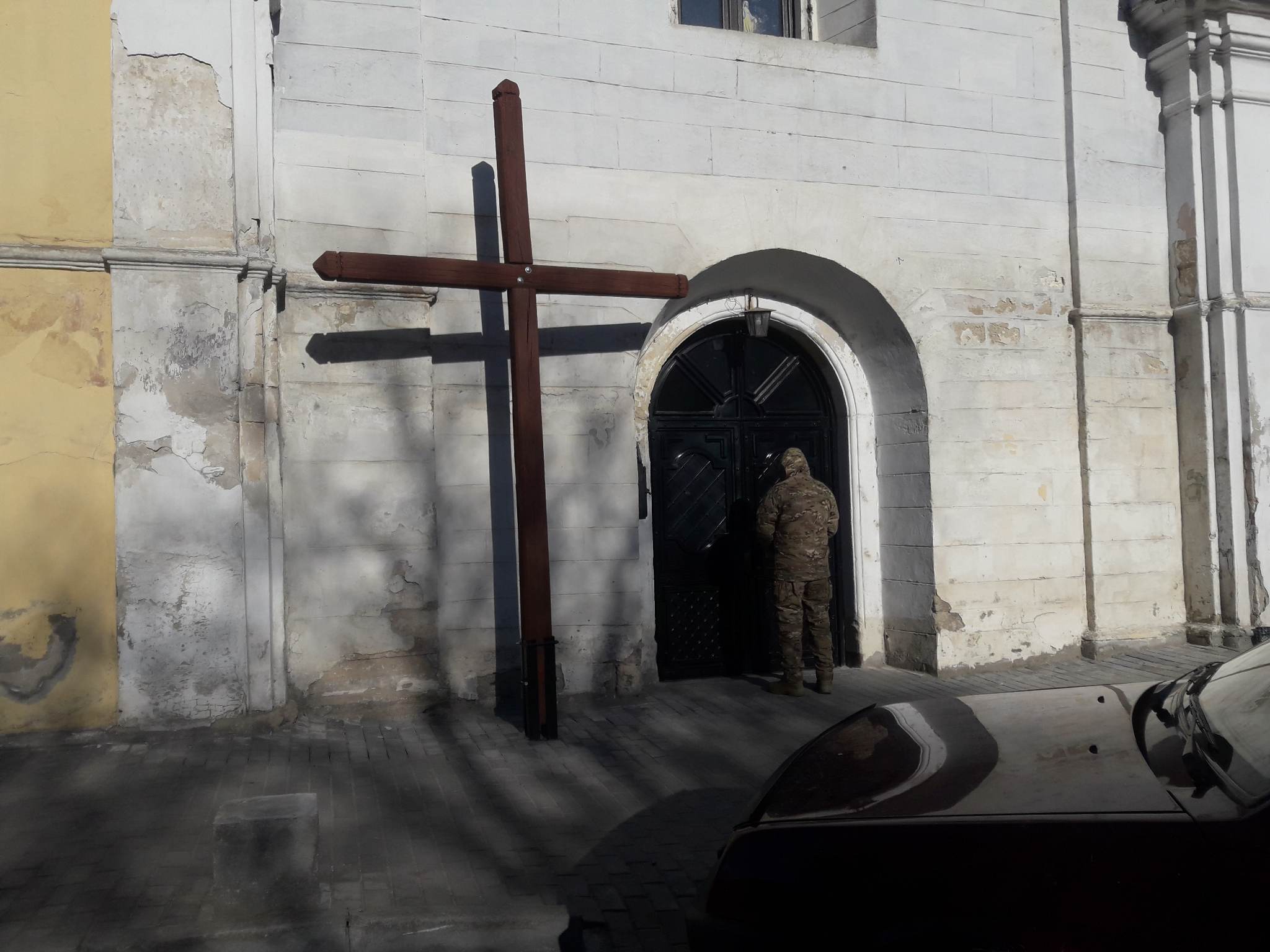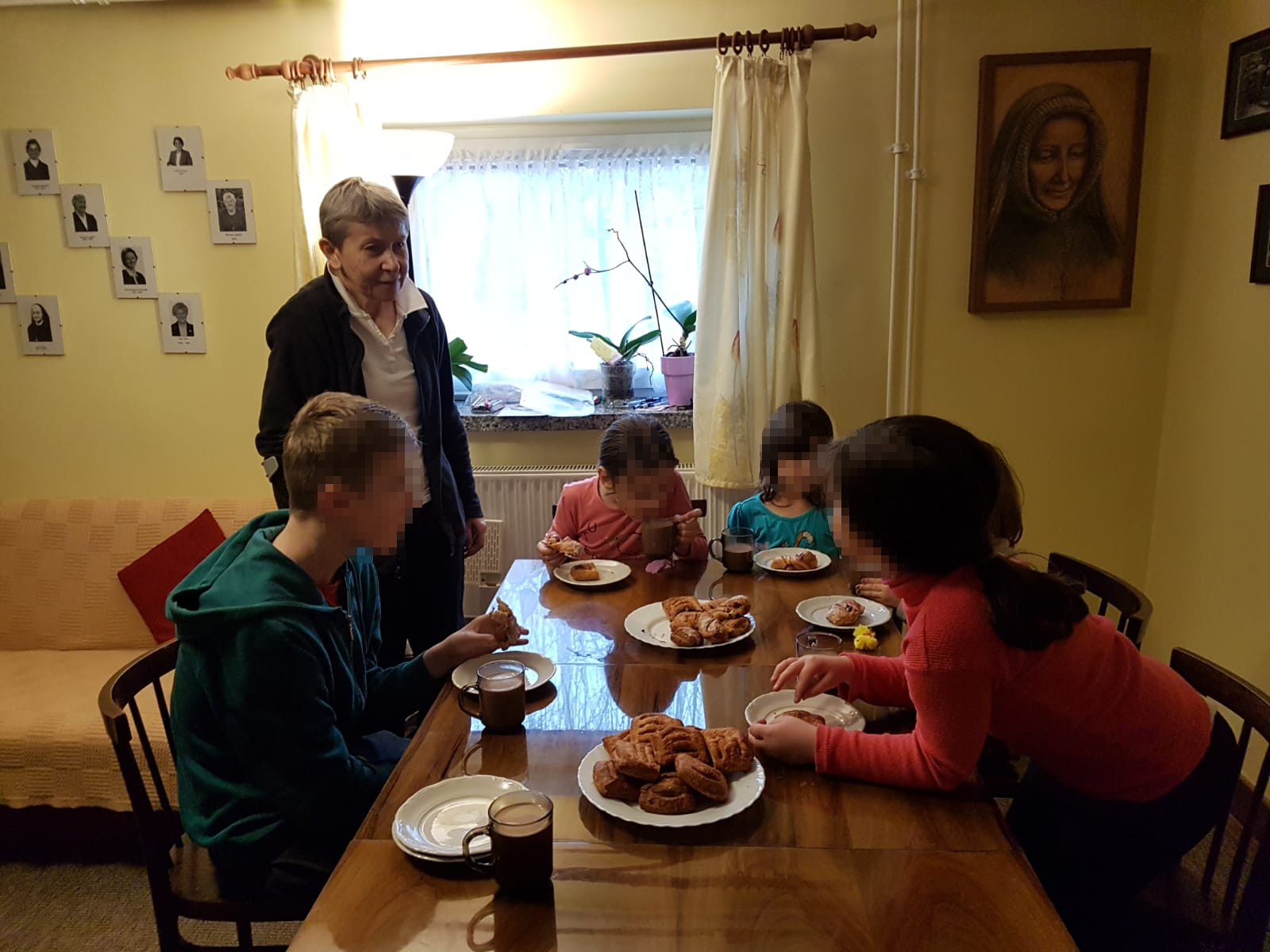On 17 July 2014, Malaysian Airlines Flight 17 was shot down by a rocket launched by pro-Russian forces in the Donetsk region of Ukraine. On board was our Australian sister, Phil Tiernan, who was returning home from a workshop in England, a retreat in Joigny, and a family reunion in Holland. She died in Ukraine.
Phil was not the first RSCJ to lose her life in that country. Many of our sisters are buried there. But to explain why, we will need to explore the Society’s history in Ukraine, which began nearly 180 years ago.
In the nineteenth century, Lviv (also known as Lemberg, Lwów, and Leopolis) was a city where Poles, Ruthenians, Ukrainians, Jews, Armenians, Germans, Austrians, Hungarian, Scots, Turks and Tartars lived together. Lviv, which has been, in turn, Polish, Austrian, Russian, and finally, Ukrainian, was part of the Habsburg Monarchy from 1772 (when the Habsburgs created the kingdom of Galicia and Lodomeria following the First Polish Partition of the Polish-Lithuanian Commonwealth) to 1918 and was known in German as Lemberg.
In 1841, a Jesuit priest asked Madeleine Sophie to send a group of religious who could take charge of a group of young women under his direction in a residence in Lviv. This invitation was inspired by the Galician (Polish) nobility, who wanted a good education of French origin (rather than German) for their children. The Sacred Heart Institute in Lviv reflected the openness, tolerance and sympathy for other nations, as well as the mutual cordiality that has always characterized the inhabitants of Lviv. The institute’s young women belonged to various social classes and even to various faiths.
During the First World War, Polish Galicia was occupied by the Russians, reconquered in 1915 by the Austro-Hungarian Empire, and then in 1918 by Polish forces. In 1939, Soviet troops occupied eastern Poland, where Lviv, then the center of the Vicariate, was located. The Vicar of the Lviv Vicariate (the former term for provinces) from 1936 was Mother Zofia Günter, a Polish RSCJ. During the first Soviet occupation, she was succeeded by Mother Paula Werhahn, a German RSCJ.
This first Soviet occupation, from September 1939 to June 1941, was the most difficult time for the religious. The building was occupied by a Ukrainian school and the House of Lviv was completely isolated from the rest of the Society. The city became dependent on Ukraine and teaching in Ukrainian was imposed. The sisters were forced to leave the house, seek shelter, and find work to earn a living. The Society of the Sacred Heart had already been in the city for almost 100 years, and the sisters had friendly relations with the people there. Therefore, it was easy for them to find places as servants in families, as educators of children, or as guardians of houses that had been abandoned, often forcibly, by their owners.
During the German occupation of Lviv, the aforementioned M. Werhahn, superior of the House of Berlin, used her influence and managed to get the German Wehrmacht to occupy the Polish convents, using them as military hospitals, which saved them from occupation by the Gestapo. The religious stayed there and even organized clandestine courses for girls, who allegedly helped them pick up the soldiers’ clothes for mending. This continued until the second Soviet occupation in July 1944. The convent continued to serve as a military hospital and the clandestine classes went on as well.
In 1945, the former Polish lands were incorporated into the Ukrainian Soviet Socialist Republic and the House of Lviv had to be closed. In the spring of 1946 came the order of evacuation for all religious of Lviv and of the regions that had belonged to Poland before 1939. The orders were severe: sisters who were not Polish citizens were not allowed to leave. Among them were sisters Vavra (Czech) and Baillet (French), both very old. Two Polish sisters remained with them: Maria Krupa as nurse, and Elzbieta Walchnowska, as head of the small community. They were all lucky enough to be able to stay in the Society’s house until 1949, when they were assigned a small apartment.
When three of the sisters died, Sister Walchnowska had the chance to return to Poland, but the Primate of Poland, Cardinal Wyszynski, asked that she be allowed to continue in Lviv. She herself was also convinced that she could not leave her post, as she was helping and supporting the Polish people who remained in Lviv. There were few priests left and the churches were closed. Only the Cathedral of the Latin rite remained open. Sister Walchnowska became sacristan and secretary. She secretly prepared the children for First Communion, made hosts for the neighboring churches, and copied the Ordo with her beautiful writing, in order to send it to priests deported to Russia so that they could celebrate Mass.
Sister Walchnowska continued these efforts until they overcame her strength. Her long-suffering illness was the last act of her apostolate in Lviv. She died there on February 24, 1971. With the death of Sister Walchnowska, the Society’s presence in the present-day Ukraine ended.
Two countries in which the Society is present today share a border with Ukraine: Poland and Hungary. Urszula Glowacka, RSCJ from Poland writes:
“We went to the train station, Warsaw East, to see what was going on and find out how to help. The train from Ukraine has just arrived, mostly with young mothers with children. The picture of a little boy remains with me. With one hand he holds on to his mother, with the other, a teddy bear – a teddy that the volunteers gave him…with eyes so sad and so scared. Mommy’s bag, that’s all their fortune. You can’t help but feel overcome and let yourself be touched!
“At the station a large number of people, travelers, refugees and helpers; volunteers at a special Information Point for Ukrainians (there are many of these in all the cities of Poland) and people of good will who bring everything they can, food, medicine. Markets set up tables with free food. The buses were also parked at the station, carrying food and medicine, and returning to Ukraine. Refugees from Ukraine do not buy tickets to Poland. A passport is enough. New arrivals are directed to schools, private homes and tourist centers. Everything is well organized. I pray for the grace to seek God who reveals himself in this reality, in these situations, in uncertainty, in change… and I ask Him for the ability to listen to life.”
We ask this with her and with our sisters who are closely touched by this war, and with those who are present at the border in the name of the Society.
As the provincials of Europe have said,
“When a part of the body is wounded,
the whole body feels the pain.”
Lolín Menéndez RSCJ
March 6, 2022
Sources:
“Fondation de Lemberg”, manuscript
Lwöw – Léopol- Lemberg, Krystina Smigel RSCJ, translated by Krystina Nahlik RSCJ
Margaret Williams RSCJ, Historia de la Sociedad del Sagrado Corazón
Margaret Williams RSCJ, Saint Madeleine Sophie
Monique Luirard RSCJ, La Sociedad del Sagrado Corazón en el mundo de su tiempo 1865 – 2000
MH17 Tragedy: Prayers for Philomene Tiernan RSCJ (rscjinternatiomal.org)
With the help of Alice Usai, Society of the Sacred Heart General Archives, Rome, Bożena Kunicka RSCJ, Provincial Secretary, Poland, Laura Moosbrugger RSCJ, Provincial of CEU, and Lukas Winder, Archivist for CEU.
Section |History|International News
Province |Antilles|Australia/New Zealand|Central Europe|Mother House|Poland










